🔊🔬⚡We present a fast and accurate method to extract complex permittivity from broadband S-parameters—validated up to 50 GHz and ideal for real-time, noninvasive analysis of tiny protein samples. Big kudos to Petr Kurka and all the authors for their exceptional work.🥇👏
🔎👇

🔊🔬⚡In our recently published work, we present a fast, broadband method to extract complex #dielectric #permittivity from μL-scale #biomolecular samples using a CBCPW. It offers accurate, sample-efficient characterization for #biomedical #research. 🔎📖👉https://ieeexplore.ieee.org/document/10973163
🎨A little glow, a little competition, and a team that always brings the fun 🥇⛳️🤩
#TeamOuting #NeonMinigolf #WorkCrew #BrightMoments #TeamEnergy
🔊🔬⚡we discovered that calibrating our permittivity-extraction method at ~75% of the biomolecular concentration range gives the best accuracy. It captures the linear S-parameter behavior while avoiding nonlinear distortion—improving consistency across samples. 🔎📖👇

🔊🔬⚡In our recently published work, we present a fast, broadband method to extract complex #dielectric #permittivity from μL-scale #biomolecular samples using a CBCPW. It offers accurate, sample-efficient characterization for #biomedical #research. 🔎📖👉https://ieeexplore.ieee.org/document/10973163
Great news from our recent Czech Academy of Sciences evaluation: our BioED team earned exceptional marks. Most of our outputs were rated outstanding, and our PEF lab-on-chip, microwave microfluidic sensing, and BAL imaging platforms were highlighted as unique, high-impact tech.👏
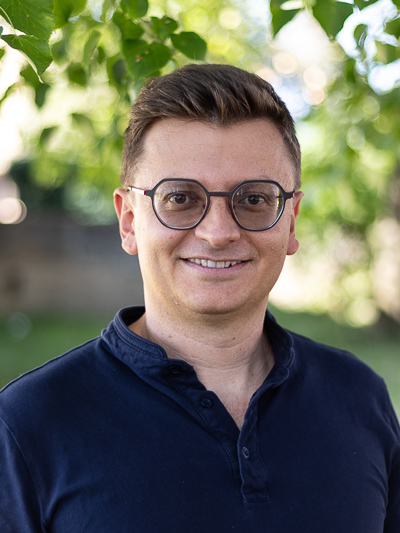


Computational modelling approaches: electromagnetic properties of biological systems
How do biological systems respond to and generate electromagnetic field? We use molecular and coarse-grain modelling and simulations to aid in the development and interpretation of our experiments. Currently, our focus is on modelling intense pulsed electric field effects on cytoskeleton structures. Furthermore, we use classical molecular dynamics to simulate dielectric properties of biomatter. Our work includes modelling processes which generate endogenous biological electromagnetic field in the microwave and visible band.
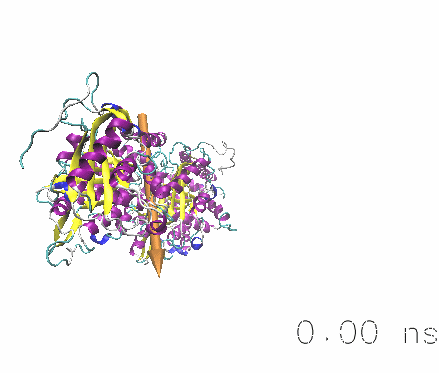
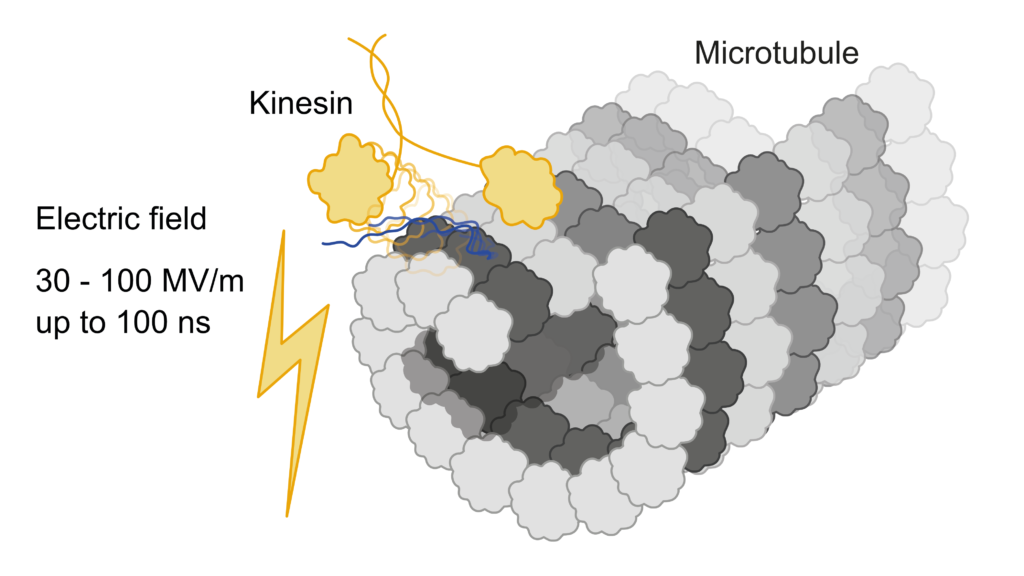
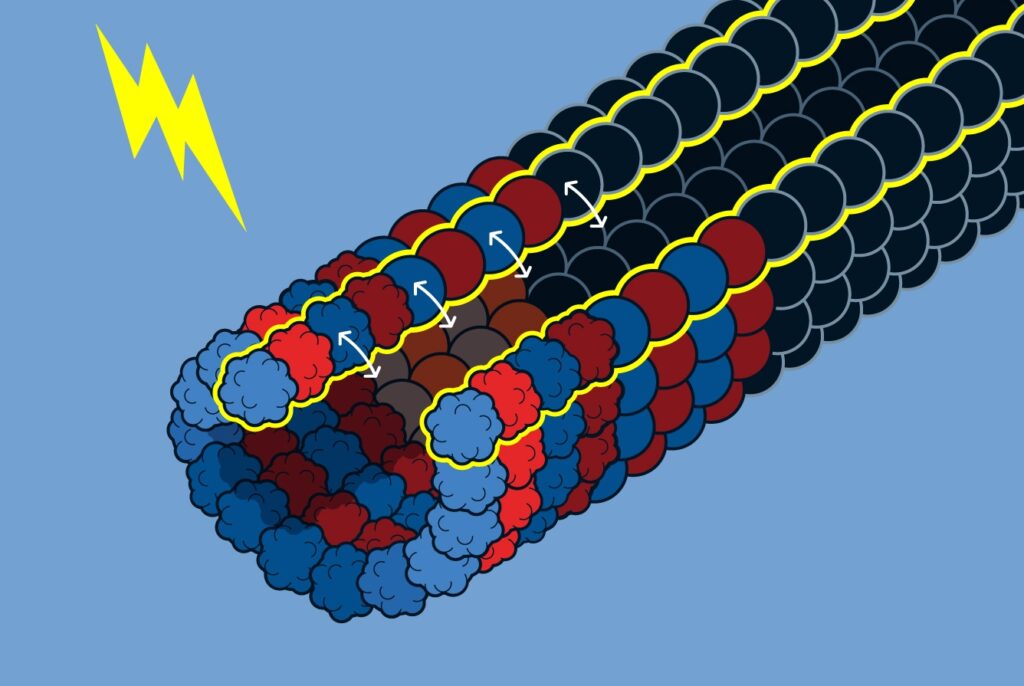
Publications:
- Průša and Cifra, “Electro-detachment of kinesin motor domain from microtubule in silico,” Comput Struct Biotechnol J, vol. 21, 1349–1361, 2023.
- Vahalová and Cifra, “Biological autoluminescence as a perturbance-free method for monitoring oxidation in biosystems,” Progress in Biophysics and Molecular Biology, vol. 177, pp. 80–108, 2023.
- Průša et al. “Electro-Opening of a Microtubule Lattice in Silico.” Computational and Structural Biotechnology Journal 19 (2021): 1488–96.
- Marracino et al. “Tubulin Response to Intense Nanosecond-Scale Electric Field in Molecular Dynamics Simulation.” Scientific Reports 9, no. 1 (2019): 10477.
- Průša and Cifra. “Dependence of Amino-Acid Dielectric Relaxation on Solute-Water Interaction: Molecular Dynamics Study.” Journal of Molecular Liquids 303 (2020): 112613.
- Cifra and Pospišil. “Ultra-Weak Photon Emission from Biological Samples: Definition, Mechanisms, Properties, Detection and Applications.” Journal of Photochemistry and Photobiology B: Biology 139 (2014): 2–10.
- Cifra et al. “Biophotons, Coherence and Photocount Statistics: A Critical Review.” Journal of Luminescence 164 (2015): 38–51.
- Kucera et al. “Spectral Perspective on the Electromagnetic Activity of Cells.” Current Topics in Medicinal Chemistry 15, no. 6 (2015): 513–522.
- Havelka et al. “Multi-Mode Electro-Mechanical Vibrations of a Microtubule: In Silico Demonstration of Electric Pulse Moving along a Microtubule.” Applied Physics Letters 104, no. 24 (2014): 243702.
- Havelka et al. “Electro-Acoustic Behavior of the Mitotic Spindle: A Semi-Classical Coarse-Grained Model.” PLoS ONE 9, no. 1 (2014): e86501.
- Havelka et al “High-Frequency Electric Field and Radiation Characteristics of Cellular Microtubule Network.” Journal of Theoretical Biology 286 (2011): 31–40.
- Cifra et al. “Electric Field Generated by Axial Longitudinal Vibration Modes of Microtubule.” Biosystems 100, no. 2 (2010): 122–31.
Electromagnetic chips: design and technology
Which tools do we use to verify our theories and models? We develop unique radiofrequency/microwave chips and planar structures including microfluidics to carry out experiments for the verification purpose. The chips are designed using advanced computational tools and produced using micro/nanofabrication techniques. Our chips are designed to be compatible with advanced microscopy systems to observe the biomolecular structures and cells in action when exposed to the electromagnetic field.
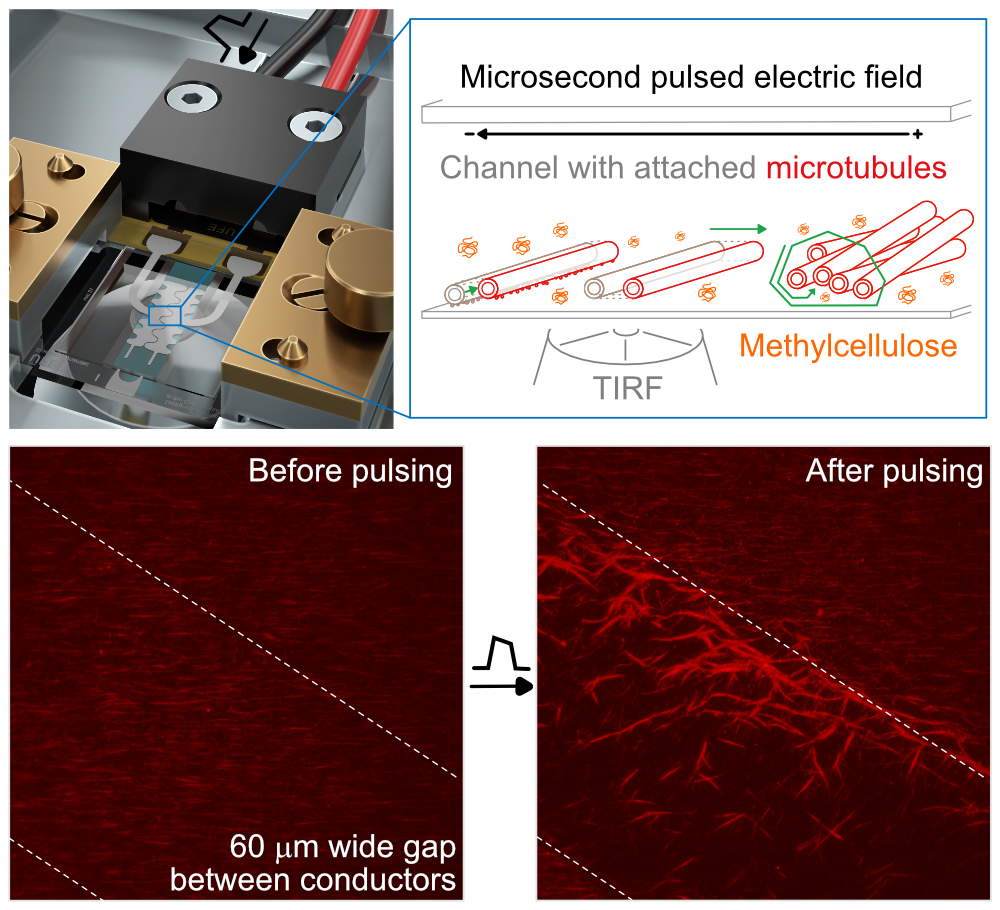
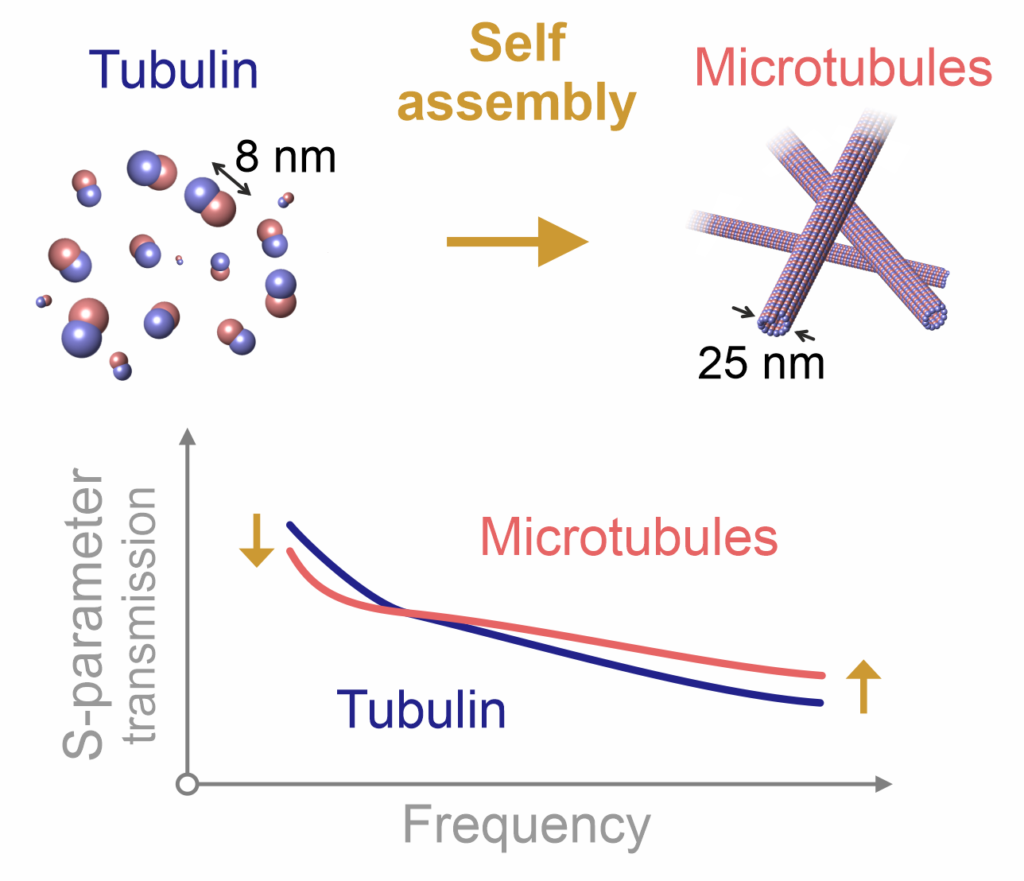
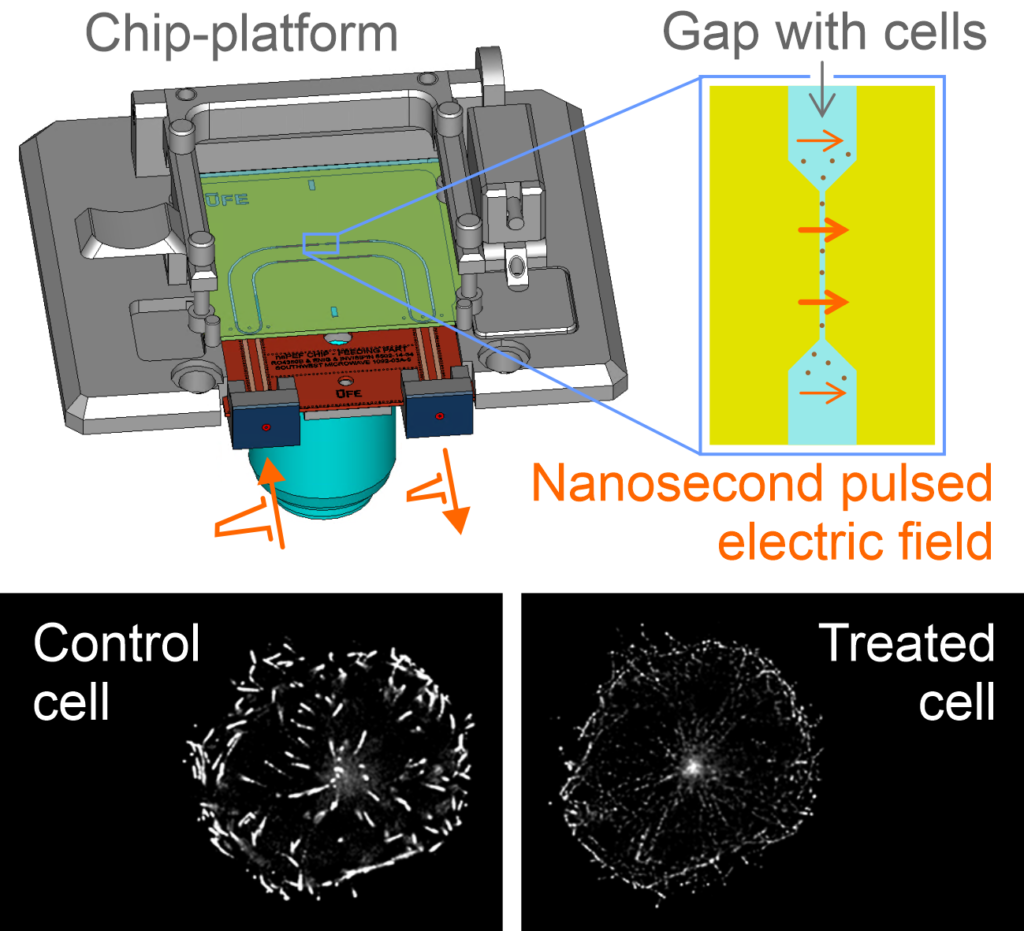
Publications:
- Havelka et al., “Lab-on-chip microscope platform for electro-manipulation of a dense microtubules network,” Sci Rep, vol. 12, no. 1, p. 2462, 2022.
- Krivosudský et al. “Microfluidic On-Chip Microwave Sensing of the Self-Assembly State of Tubulin.” Sensors and Actuators B: Chemical 328 (2021): 129068.
- Havelka et al. “Nanosecond Pulsed Electric Field Lab-on-Chip Integrated in Super-Resolution Microscope for Cytoskeleton Imaging.” Advanced Materials Technologies 5, no. 3 (2020): 1900669.
- Havelka et al. “Rational Design of Sensor for Broadband Dielectric Spectroscopy of Biomolecules.” Sensors and Actuators B: Chemical 273C (2018): 62–69.
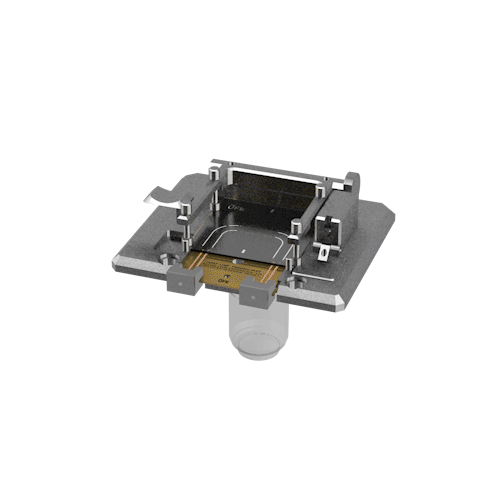
Biophysical experiments: electromagnetic properties of proteins and cells
We verify theoretical simulations via experimentation: currently, we focus on cytoskeleton protein nanostructures, namely microtubule and related proteins. Microtubules are crucial structures present in every cell and enable cell division and intracellular transport. Our current projects aim to measure electromagnetic/dielectric properties of microtubular systems and control these systems using ultra-short electric and electromagnetic pulses. Our experimental work also includes measurement and analysis of endogenous light (auto chemiluminescence) of proteins and cells, currently within the context of label-free probing of oxidation-modulating bioeffects of electromagnetic fields.
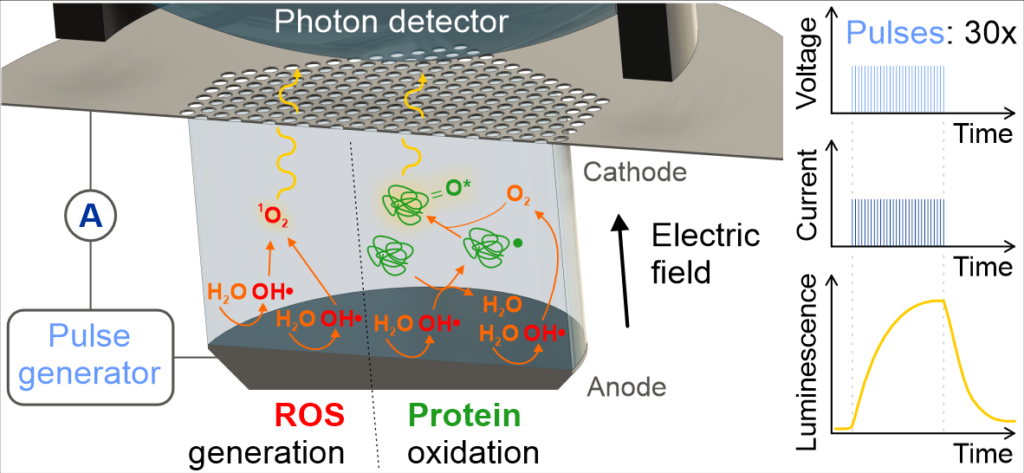
Publications:
- Vahalová et al. “Biochemiluminescence Sensing of Protein Oxidation by Reactive Oxygen Species Generated by Pulsed Electric Field,” Sens Actuators B Chem, vol. 385, p. 133676, 2023.
- Poplová et al. “Biological Auto(chemi)luminescence Imaging of Oxidative Processes in Human Skin,” Analytical Chemistry, vol. 95, no. 40, pp. 14853–14860, 2023.
- Havelka et al. “Nanosecond Pulsed Electric Field Lab-on-Chip Integrated in Super-Resolution Microscope for Cytoskeleton Imaging.” Advanced Materials Technologies 5, no. 3 (2020): 1900669.
- Chafai et al. “Reversible and Irreversible Modulation of Tubulin Self‐Assembly by Intense Nanosecond Pulsed Electric Fields.” Advanced Materials 31, no. 39 (2019): 1903636.
- Krivosudský et al “Resolving Controversy of Unusually High Refractive Index of a Tubulin.” EPL (Europhysics Letters) 117, no. 3 (2017): 38003.
- Burgos et al. “Ultra-Weak Photon Emission as a Dynamic Tool for Monitoring Oxidative Stress Metabolism.” Scientific Reports 7, no. 1 (2017): 1229.
- Poplová et al. “Poisson Pre-Processing of Nonstationary Photonic Signals: Signals with Equality between Mean and Variance.” PLOS ONE 12, no. 12 (2017): e0188622.
- Saeidfirozeh et al. “Endogenous Chemiluminescence from Germinating Arabidopsis Thaliana Seeds.” Scientific Reports 8, no. 1 (2018): 16231.
- Sardarabadi et al. “Enhancement of the Biological Autoluminescence by Mito-Liposomal Gold Nanoparticle Nanocarriers.” Journal of Photochemistry and Photobiology B: Biology 204 (2020): 111812.




